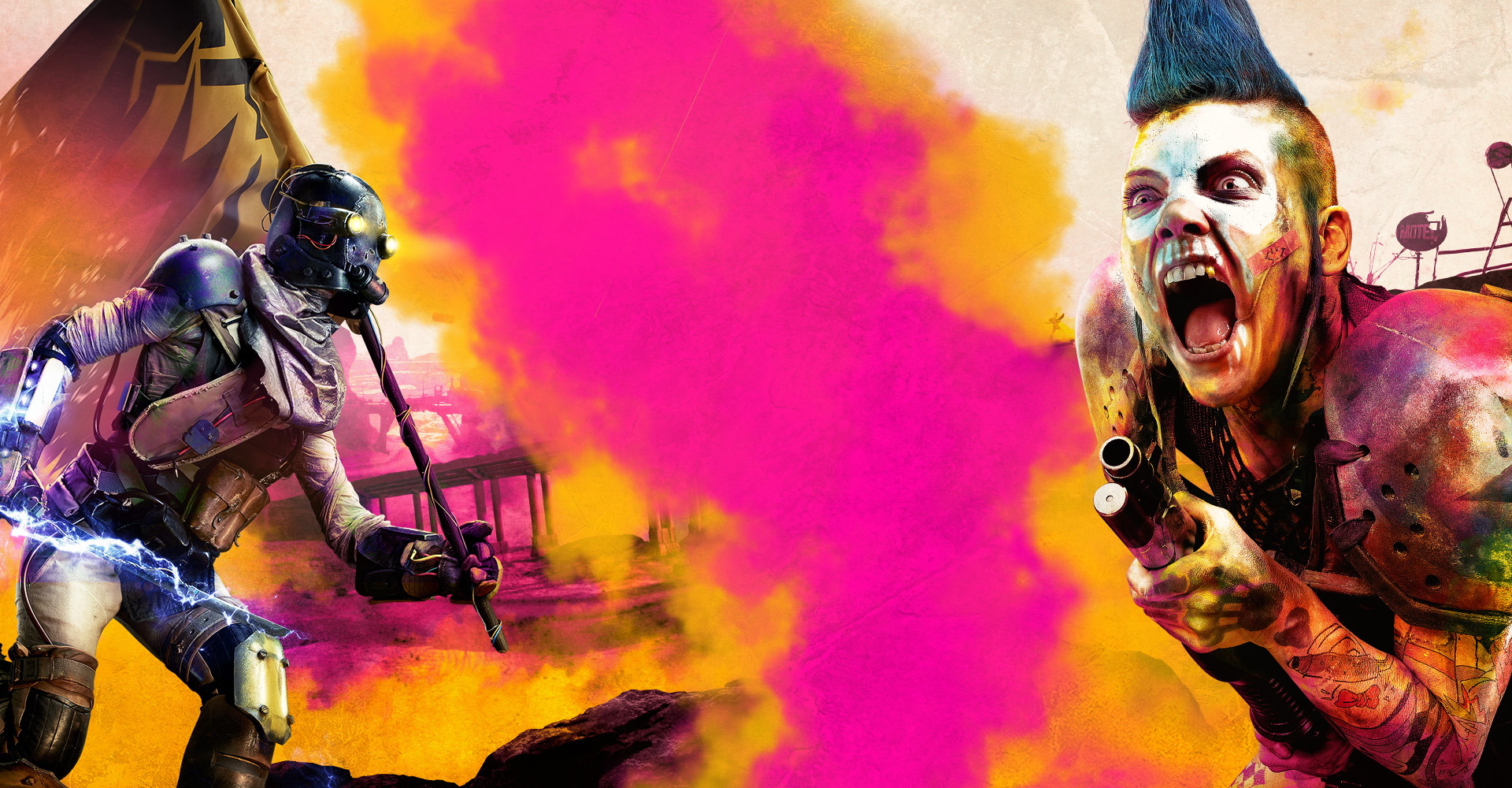Although it’s best known for the DOOM franchise, id Software isn’t a stranger to developing other games. One such title was 2011’s new intellectual property, RAGE; a first-person shooter set in a post-apocalyptic open world. In a somewhat unique turn of events, the title started on iOS in 2010 before releasing as a full fledged console title the next year. Of course, the two games weren’t identical — it’s just an interesting thing to note, and something that doesn’t happen often.
Hell, a modified arcade cabinet of RAGE was even featured in an episode of Breaking Bad.
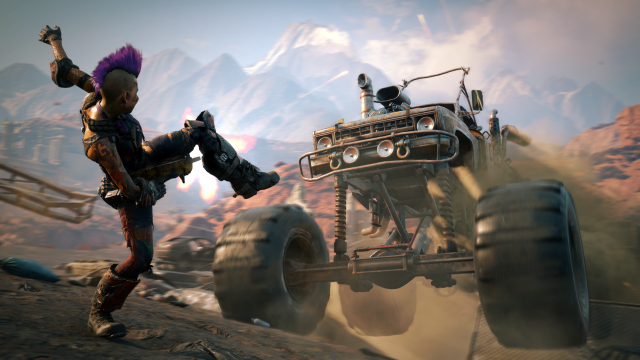
Fast forward to today, and nearly 8 years have passed. Years that have seen many new games hit store shelves, including a reboot of DOOM that generated some pretty great word of mouth, not to mention critical acclaim. This particular year has brought with it something that people weren’t expecting to come out, given some of the lukewarm receptions to the original as well as how much time has passed. We’re talking about RAGE 2, a joint effort by id Software and its new partners at Avalanche Studios. They’re the folks behind the Just Cause games, as well as Mad Max, if you’re unfamiliar with their collective’s moniker.
Set thirty years after the events of its predecessor, RAGE 2 continues along with the same open world shooter formula. At this point in the narrative, humanity has healed the planet somewhat, allowing for a lush jungle to prosper in one of its districts. Things are not all well, though, because the Authority — the main antagonists from the original game — have returned to wreak havoc on the human world, in hopes of taking it over for themselves. Their leader, General Martin Cross, has a bone to pick with the pesky humans, and will let nothing stop his quest for revenge.
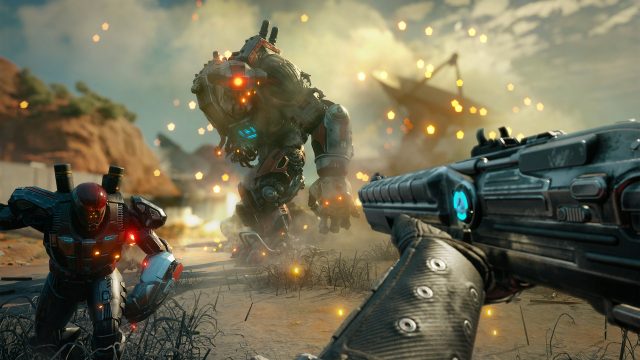
This is where we, the player, come in. As Walker, the last (male or female) surviving Ranger from Vineland, we must step up and use Nanotrite technology to turn the tide against the Authority. This is easier said than done, of course, and won’t be a simple cakewalk or something that can be done in an hour. A dormant project must be reawakened with the help of three particular allies, and many enemies stand in the way.
To be honest, the story is pretty much just an excuse to shoot a lot of mutants, Authority members and other type(s) of enemies. This is RAGE, after all, and it’s not a series that attempts to win awards for rich, deep stories, or writing for that matter. Thus, the narrative here is kind of barebones and will ultimately be pretty forgettable for most. This is driven by a lack of creativity and a general lack of depth as well, as all of the secondary characters you’ll meet in the game are one note and forgettable. It serves its purpose, though, and gives us reason to fire guns, throw boomsticks and blow shit up.
This is a rather open game, too, meaning that you’re able to approach the campaign as you wish. After the opening cutscenes, battles and learn on the fly tutorials you’ll find yourself with an empty map and three objectives. Each of the three corresponds to one of the project members you’ll have to find, talk to and get help from, which boils down to talking to them, being given quests and doing what they need you to do in order to progress. In turn, they’ll offer ‘projects,’ which are simply different perks that you can unlock. Things like 25% extra ammunition, no fall damage, more health when you heal, extra projectiles, and so on.
In fact, there are too many upgrades to be found in RAGE 2. The game’s menu is a confusing mess, and is full of tabs offering upgrades, perks and abilities. Each one requires something different, too, be it nanites, vehicle parts, feltrite crystals or something else. There’s simply too much going on, to the point that it’s overwhelming and annoying, not to mention confusing. A lot of them are quite helpful, though, including the abilities that you learn in discovered arks, such as the ability to dash, the ability to slam the ground, a deployable temporary shield and a double jump mechanic.
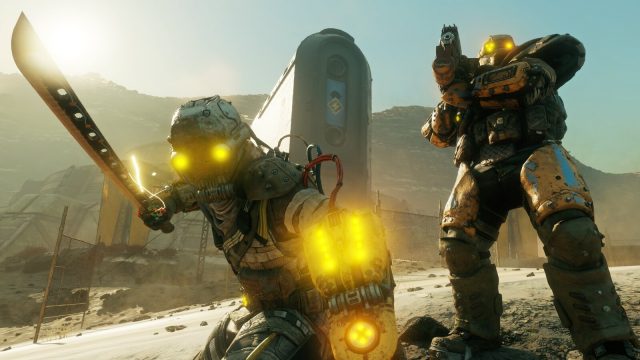
Unfortunately, there are only approximately eight main story missions, counting the opening and the journey towards the final boss. This means that each ally gives you two missions. That’s all. The rest are side missions and world events found within the map. Honestly, though, it all feels the same.
The idea behind all of this is very similar to Just Cause 2, which also didn’t have many story missions and relied on its side content to keep players busy and content. The first mission from each ally will be available to you at the start, but the other one won’t unlock until after you’ve reached level 5 with them. This is done by doing all of the activities that the map offers, like destroying sentries, taking out convoys, finding arks and taking over enemy outposts. It doesn’t take long, either. Since I tried to do as much side stuff as possible early on, I was levels 4 and 6 with the second and third allies before I even spoke to them. It was easiest to level up with the first one, and by the time I finished the game I was probably an 8 out of 10 on the scale.
For most of the nine to twelve hours you’ll spend playing this game, you’ll be driving from place to place before jumping out of your vehicle and laying siege to enemies. You may be going headfirst into a bunker, destroying all of the fuel at a gas station, laying waste to mutants’ nesting places or taking out camps, but you’ll be taking part in a similar gameplay loop throughout. That is running, jumping, shooting and taking cover if need be. RAGE 2 is a fast-paced and action-packed game, but it’s not a very varied or creative one when it comes to mission design. Even its story missions all feel quite similar, and don’t stand out all that much, even from the game’s side content.
That said, it’s all pretty fun, at least for a while. Gameplay is fast and fluid, and there are numerous ways to take out every enemy you come across, be it using a weapon (pistol, shotgun, assault rifle, rocket launcher, BFG, etc.), a grenade, or one of your special abilities. You can also go into overdrive if you’ve collected enough momentum from killing groups of enemies. This is basically just a heightened and extra powerful state where bullets do more damage, enemies blow up better and health regenerates quickly. You’ll almost always get health from kills, though, provided that you’re quick enough. Most enemies drop crystals when they’re down, and these can be picked up to increase your health. During crazy battles, you won’t even notice it happening.
As is usually the case with id Software game’s, this one’s strongest suit and biggest selling point is its fluid and addictive first-person shooting mechanics. The guns feel good, the action is fast and colourful, there’s lots at your disposal and it all looks pretty nice. This all combines to create an experience that makes you feel like a badass after the first little while, though it sometimes becomes too easy as a result. At least, that’s what I found on the normal difficulty, where early firefights had me worried and looking for health and mid to late game ones had me running around without worry, dummying most enemies with a shotgun blast or two. I even kept forgetting about overdrive.
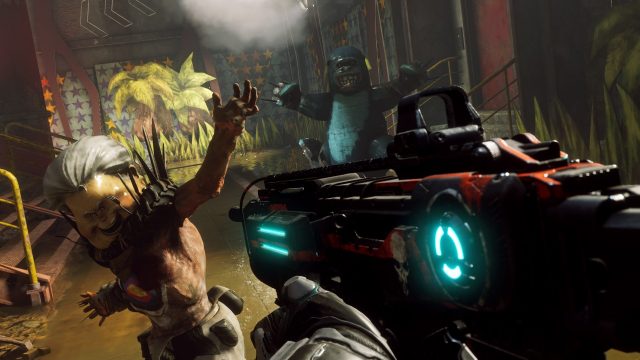
If the rest of the experience was as good as the gunplay, RAGE 2 would be a masterpiece. It isn’t, but it’s still fun and serves the purpose of keeping bullets flying. The map is decently big, with several different regions (one of which is a dated looking, sand covered city, while another happens to be the aforementioned lush forest), there’s always an outpost, nest, base or gas station to take out, and there’s a healthy amount of optional content in the form of arks. Hell, Mutant Bash TV even returns, though it’s not as great as it once was. Only two episodes appeared on the map, too, which was disappointing because I loved it the first time around.
On top of the above, this sequel also features more racing, a lot of which is organically created within the open world. You can drive out in search of convoys to destroy with mounted vehicular machine guns, rams and rockets, but those won’t be the only vehicles you’ll come across. Occasionally, a smaller vehicle will dry by and challenge you to an impromptu race that uses the game world’s many dirt roadways as tracks. They’re fun, but simple and won’t keep you busy for long. The same is true of the one structured buggy race, which is actually a part of the campaign.
The driving isn’t spectacular, but it’s not bad by any means. There are numerous vehicles to use, but only three or four are vital to the campaign, including an army truck, a tank and the buggy you race in at the speedway. Every vehicle I drove was serviceable, but none of them drove as fluidly as I would’ve liked. This led to some crashes and a bit of frustration when I went for a lap record at the track, but for the most part it wasn’t a big deal. It did make me miss Days Gone‘s motorcycle, though.
I would also be remiss if I didn’t mention the collectibles, which come in more than one form. First, there’s the yellow balloons that will appear in the sky every once in a while, and must be shot down to redeem. Then, there are the chests, which can be found at almost every base, outpost, eco pod or what have you. Some contain money, whereas others contain crystals or upgrade items. Adding on to that are spy drones, arks and colossal monsters, all of which are missable. Sure, you’ll have to venture to some arks during the campaign, but quite a few of them are off the beaten path and must be looked for or ventured to after being told their location. If you don’t, you’ll be without some abilities, and perhaps even without some important weapons like the super powerful shotgun.
Speaking of weapons, it’s important to note that — like the vehicles — they can all be upgraded. Through upgrades, they become more powerful and also receive optional perks like increased firing speed, better reloading or the ability to target more than one enemy. When the credits rolled, I had four guns (the pistol, assault rifle, shotgun and rocket launcher), all of which I used a lot. The weapon wheel wasn’t full, though, and some other weapons were ghosted out because I hadn’t found them in arks or wherever they were. I believe one was DOOM‘s BFG, because I’ve read about it being included in this game.
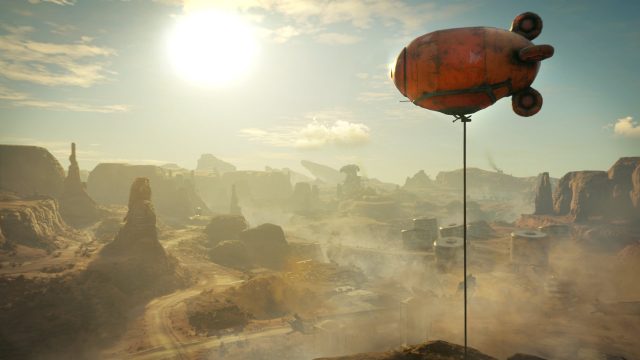
I was able to finish RAGE 2 in less than two days, and it took two lengthy sessions to complete. In total, I’d say that I played for over twelve hours, though I probably finished the campaign in between ten and eleven. That was with taking my time, which I try to do and certainly did at the start of this campaign, when I spent a while doing side activities in order to level up and earn new abilities.
Truth be told, I was surprised by how short this thing ended up being, and how limited the story content was. Going in, I’d expected something meaty since this is, after all, an open world shooter. Alas, it only took me as long as your average shooter, and left me feeling like something was missing. This game simply doesn’t feel as developed or as full as it should be, even with its wealth of repeated side content, bounty boards and the like. Sure, there’s lots to do, but a lot of it’s filler and two of the map’s regions are hardly used during the campaign.
I did have a good time with this thing, though I wish that I would’ve come away with my mind blown, or feeling like it was as good as I’d hoped it would be. It’s just not everything that it could’ve been, and isn’t as deep, original or fun as the first game was. Sure, I may be looking back at the first RAGE with rose coloured glasses, but I honestly loved it and couldn’t get enough of it and its DLC. That game will always be one of my absolute favourites, because it was just so fun to play and had an interesting open world. A world that was more fun to explore than this one, and had more intrigue to it than this one does, with its bevy of wide open spaces.
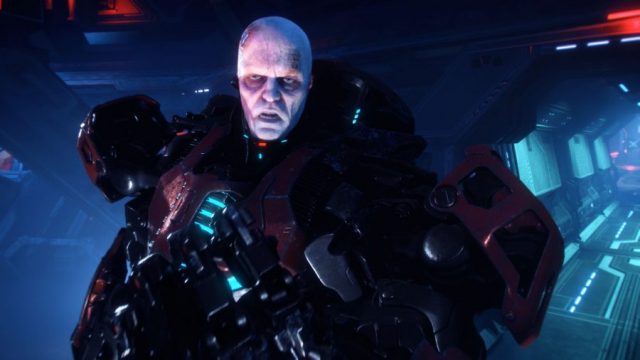
Visually, RAGE 2 is pretty impressive. At times, it can look downright great, especially when a balls to the wall gunfight is taking place on screen. Things are colourful, chaotic and explosive, and it all runs really well on the X. That said, the visuals can sometimes be muddy, the odd glitch does occur, bunkers repeat during story missions and the open world isn’t as varied or detailed as I would’ve hoped. Still, it looks good and is certainly well above average even with its (somewhat minor) faults.
For the most part, the sound is pretty impressive. The effects are boisterous and really sell what’s going on on screen, and it all feels like you’re in the middle of a frenzied action movie. On the other hand, the voice acting is decent but unspectacular (as in some performances are better than others), the music is solid, and the dialogue volume isn’t always as high as it could be. It sometimes gets drowned out by what’s going on around you.
During my twelve hours with the game, I saw a couple of visual glitches, had to restart one time because an ark failed to load properly and left me stuck, and also experienced one sound problem. This was just before I stopped playing, and occurred while I was racing. For whatever reason, a loud engine sound kept repeating until the game was closed and restarted.
RAGE 2 is a colourful, fun, and action-packed game that most fans of the genre will enjoy. It knows what it wants to be, and doesn’t try to be anything different. However, while it’s enjoyable and can be pretty addicting, it’s surprisingly short and doesn’t have as much depth as one might hope.

